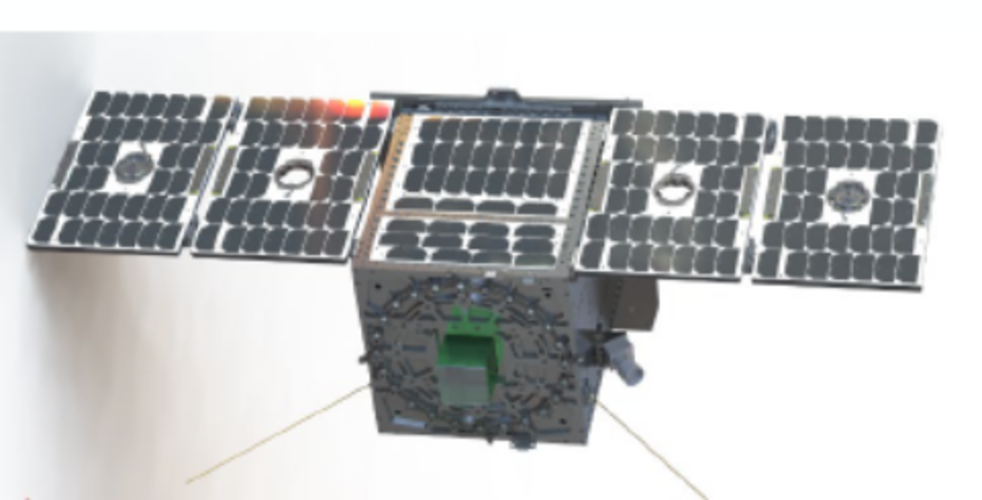
Copernical Team
Space Innovation Lab experiment heads to International Space Station
This request seems a bit unusual, so we need to confirm that you're human. Please press and hold the button until it turns completely green. Thank you for your cooperation!
Press and hold the button
If you believe this is an error, please contact our support team.
185.132.36.159 : fcf39c66-8640-4e2c-8692-3bd7b384
Contract signed for new Arctic Ocean Surveillance Precursor mission

On Friday 1st November, 2024 ESA’s General Support Technology Programme (GSTP) and Kongsberg Defence & Aerospace (KDA), Norway, have signed a contract to develop the Arctic Ocean Surveillance precursor (AOS-p) mission.
Devastating floods in Spain witnessed by satellites

Torrential rainfall causing deadly flash floods has hit southern and eastern Spain in regions including the Costa del Sol, where the city of Malaga is located, and Valencia in the east. As these areas struggle to cope with the aftermath, satellite technology has played a crucial role in assessing the damages of the affected areas.
Latest space station science reveals news for astronaut health and telescope longevity
This request seems a bit unusual, so we need to confirm that you're human. Please press and hold the button until it turns completely green. Thank you for your cooperation!
Press and hold the button
If you believe this is an error, please contact our support team.
185.132.36.159 : 26081e88-825f-4cbf-97b5-ed9a36a1
CRISTAL prepares to sparkle

The structure of the first Copernicus Sentinel CRISTAL satellite is now ready to be equipped with the hardware that will allow it to function in orbit. Then, engineers will be able to install the advanced instruments that will provide ‘crystal clear’ insights into environmental changes in the world’s remote icy regions.
World's first wooden satellite launched into space
This request seems a bit unusual, so we need to confirm that you're human. Please press and hold the button until it turns completely green. Thank you for your cooperation!
Press and hold the button
If you believe this is an error, please contact our support team.
185.132.36.159 : f5040589-07d5-4191-8c3d-e141f995
Moon waves goodbye to Hera
 Image:
Moon waves goodbye to Hera
Image:
Moon waves goodbye to Hera Telesat awards SatixFy $39M contract for baseband units in Lightspeed network expansion
 Telesat (NASDAQ and TSX: TSAT), a major satellite operator, has entered into a US$39 million agreement with SatixFy Communications Ltd. ("SatixFy") (NYSE American: SATX), a developer of advanced satellite communication technologies, to design and supply Landing Station Baseband Units for Telesat's Lightspeed Network.
Under the agreement, SatixFy will develop the baseband systems that facil
Telesat (NASDAQ and TSX: TSAT), a major satellite operator, has entered into a US$39 million agreement with SatixFy Communications Ltd. ("SatixFy") (NYSE American: SATX), a developer of advanced satellite communication technologies, to design and supply Landing Station Baseband Units for Telesat's Lightspeed Network.
Under the agreement, SatixFy will develop the baseband systems that facil Texas A&M to train machine learning tools to design materials for fusion power plants
 As the search for renewable energy sources continues, fusion energy emerges as a strong candidate. Researchers from the Texas A and M Engineering Experiment Station have received funding from the U.S. Department of Energy Advanced Research Projects Agency-Energy (ARPA-E) to train machine learning tools in the discovery of new materials for fusion power plants.
An integral part of a fusion
As the search for renewable energy sources continues, fusion energy emerges as a strong candidate. Researchers from the Texas A and M Engineering Experiment Station have received funding from the U.S. Department of Energy Advanced Research Projects Agency-Energy (ARPA-E) to train machine learning tools in the discovery of new materials for fusion power plants.
An integral part of a fusion Niger inks deal with Russia for three satellites
 Niger signed a deal Friday with Glavkosmos, a subsidiary of Russia's Roscosmos space agency, to buy three satellites to boost security in the Sahel nation and its neighbours, all battling jihadist attacks.
Niger, Mali and Burkina Faso, all under military rule following a string of coups since 2020, joined together in September 2023 under the Alliance of Sahel States (AES), after severing tie
Niger signed a deal Friday with Glavkosmos, a subsidiary of Russia's Roscosmos space agency, to buy three satellites to boost security in the Sahel nation and its neighbours, all battling jihadist attacks.
Niger, Mali and Burkina Faso, all under military rule following a string of coups since 2020, joined together in September 2023 under the Alliance of Sahel States (AES), after severing tie 
